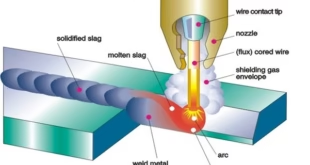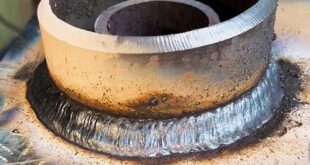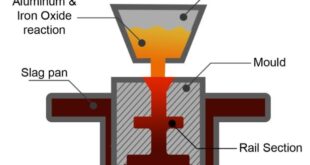Oxy-Hydrogen Welding
Introduction
In the realm of modern manufacturing, technological advancements are continually reshaping the way we create, build, and innovate. Oxy-Hydrogen Welding, a cutting-edge technique that combines oxygen and hydrogen gases, has emerged as a revolutionary method of joining materials. This article delves deep into the world of Oxy-Hydrogen Welding, uncovering its applications, benefits, disadvantages, safety perspective, consumables, and its potential to reshape various industries.

Oxy-Hydrogen Welding: The Power of Precision
Oxy-Hydrogen Welding, often referred to as “Brown’s Gas Welding,” fuses together two gases—oxygen and hydrogen—to create a highly controlled flame. This flame burns at an incredibly high temperature, producing minimal heat-affected zones and ensuring precise welds. The method is particularly advantageous when working with intricate designs and delicate materials, as it minimizes distortion and maintains the structural integrity of the components.
Applications of Oxy-Hydrogen Welding
Jewelry Design and Manufacturing
Oxy-Hydrogen Welding has found its niche in the world of jewelry crafting. The fine, concentrated flame allows artisans to seamlessly join precious metals without compromising their intricate designs. Whether it’s intricate filigree work or the delicate setting of gemstones, Oxy-Hydrogen Welding ensures that each piece is crafted with utmost precision.
Electronics Assembly
In the electronics industry, miniaturization is key. Oxy-Hydrogen Welding’s ability to create small, precise welds makes it an ideal choice for joining tiny components on circuit boards. The controlled flame size minimizes the risk of damaging nearby components, making it an invaluable technique in creating robust and reliable electronics.
Medical Device Fabrication
The medical field demands precision and hygiene in every aspect. Oxy-Hydrogen Welding’s clean and controlled flame makes it a go-to choice for creating medical devices. From manufacturing intricate surgical instruments to assembling implantable devices, this technique ensures that products meet the highest standards of quality and safety.
Automotive Innovation
In the automotive sector, weight reduction is a constant goal to enhance fuel efficiency. Oxy-Hydrogen Welding’s low heat input makes it suitable for joining lightweight materials like aluminum and magnesium. This welding method supports the creation of fuel-efficient, durable, and environmentally friendly vehicles.
The Advantages of Oxy Hydrogen Welding
- Minimal Distortion: The precise flame of Oxy-Hydrogen Welding results in minimal distortion, ensuring that delicate components retain their shape and integrity.
- Heat-Affected Zone Control: The controlled flame reduces the heat-affected zone, preventing damage to the surrounding material.
- Clean and Eco-Friendly: Oxy-Hydrogen Welding produces a clean flame, leaving behind no harmful residues or pollutants, aligning with eco-friendly manufacturing practices.
- Enhanced Precision: The technique’s pinpoint accuracy allows for intricate work that would be challenging with traditional welding methods.
Disadvantages of Oxy-Hydrogen Welding
- Limited Thickness: Oxy-Hydrogen Welding is best suited for thin materials. Welding thicker materials may require multiple passes, affecting efficiency.
- Skill Intensive: Achieving optimal results with Oxy-Hydrogen Welding demands a high level of skill and training, which may limit its widespread adoption.
- Limited Penetration: The technique’s lower heat input may result in limited penetration, affecting the strength of the weld in certain applications.
Safety Perspective in Oxy-Hydrogen Welding
Oxy-Hydrogen Welding, while offering numerous benefits, requires strict adherence to safety protocols. As the process involves highly flammable gases, proper ventilation, fire prevention measures, and appropriate personal protective equipment (PPE) are essential. Training and awareness about potential hazards are crucial to ensure a safe working environment.
Consumables Used in Oxy-Hydrogen Welding
The consumables utilized in Oxy-Hydrogen Welding include oxygen and hydrogen gases, which are mixed in precise ratios to create the required flame temperature. The purity and quality of these gases significantly impact the welding results. Additionally, filler materials specific to the base metals being joined are used to ensure strong and reliable welds.
FAQs
Can Oxy-Hydrogen Welding replace traditional welding methods?
While Oxy-Hydrogen Welding offers precise and controlled results, it may not replace all traditional methods. Its applications are more specific to delicate and precise tasks.
Is Oxy-Hydrogen Welding safe for food-grade equipment?
Absolutely. Oxy-Hydrogen Welding produces a clean flame, making it suitable for food-grade equipment fabrication where hygiene is crucial.
What industries benefit the most from Oxy-Hydrogen Welding?
Industries such as jewelry, electronics, medical devices, and automotive manufacturing find significant value in Oxy-Hydrogen Welding due to its precision and minimal heat impact.
Can Oxy-Hydrogen Welding be automated?
Yes, automation is possible. The precise nature of the flame makes it compatible with robotic welding systems, enhancing efficiency and consistency.
How does Oxy-Hydrogen Welding contribute to sustainable manufacturing?
Oxy-Hydrogen Welding’s low heat input reduces energy consumption, and its clean flame aligns with sustainability goals by minimizing environmental impact.
Are there any limitations to Oxy-Hydrogen Welding?
Oxy-Hydrogen Welding may not be suitable for heavy-duty applications that require deep penetration or high welding speeds.
Conclusion
Oxy Hydrogen Welding stands as a testament to human innovation and our unending quest for precision and excellence in manufacturing. This technique’s ability to produce intricate, reliable, and sustainable welds in various industries is a testament to its potential. As technology continues to evolve, Oxy Hydrogen Welding is set to play an integral role in shaping the future of manufacturing.
 Welding of Welders All about Welding and Welders
Welding of Welders All about Welding and Welders



